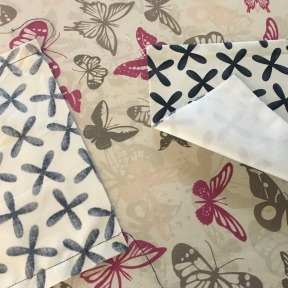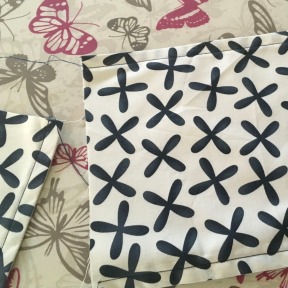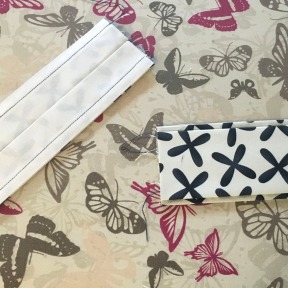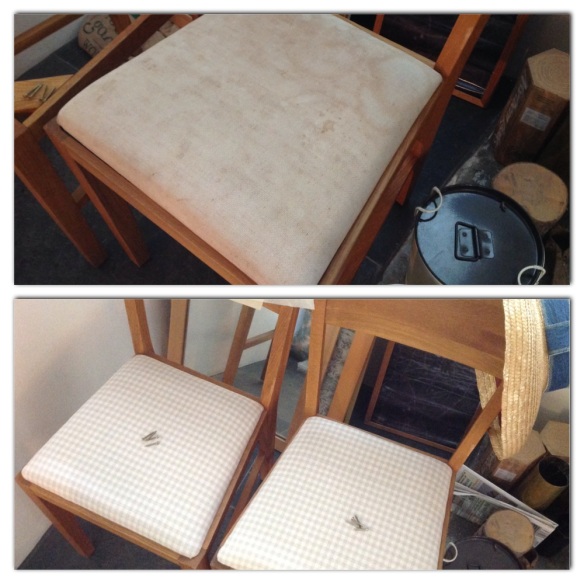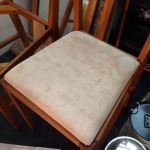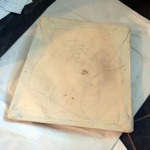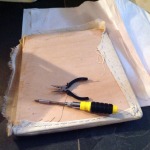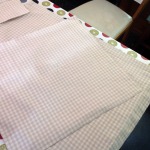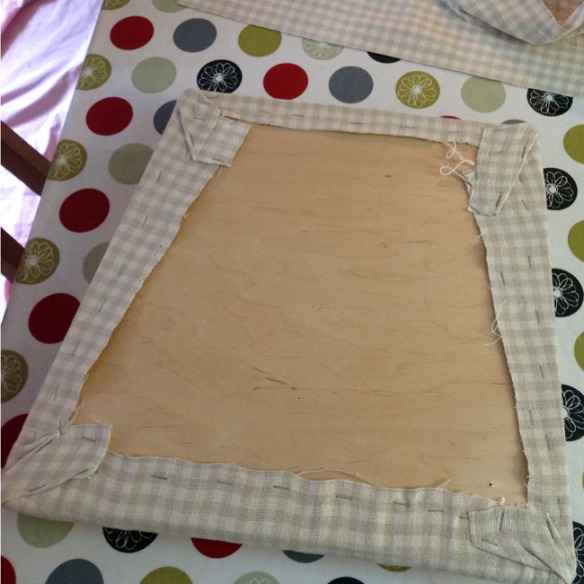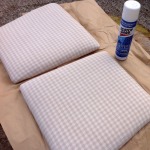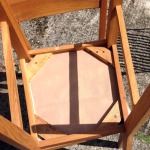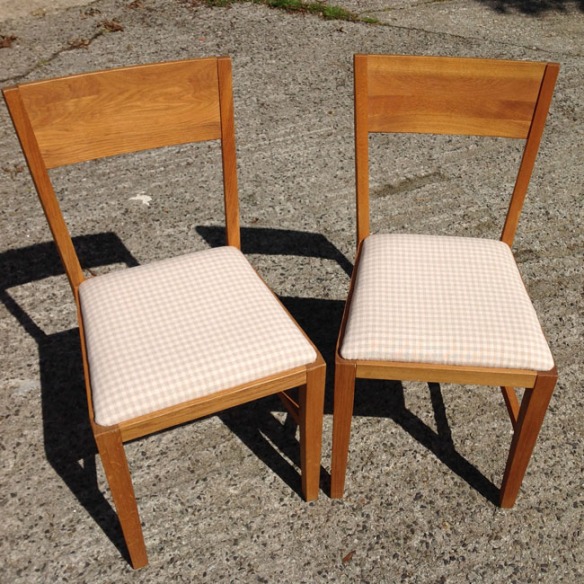I don’t think anyone predicted that ‘home-made fabric face coverings’ would be the hot apparel item of 2020, but here we are…
Fabric face masks are easy to make, if you have a fabric stash, a basic sewing machine, and a vague idea of how to use it then you’re well on your way. The AFNOR pattern is the best one I’ve found. AFNOR is the French national standards organisation (think ‘kitemark’ if you’re British), and they have undertaken an extensive research program into suitable and effective designs and fabrics, resulting in a PDF report you can find here (in English) which recommends this ‘flat-fold’ pattern, similar to a standard surgical mask, and a ‘duckbill’ mask pattern. The PDF is a really interesting, if rather dense read, but the way the patterns are presented is rather different from what ‘hobby sewists’ are used to working from!
I have modified the assembly technique to make it easier to sew, and also to allow me to use 1/2” bias binding for the ties – if you have 1” bias tape or ribbon, I recommend you use that instead, and you’ll avoid the slightly fiddly bit! (There are extra instructions for using 1″ tapes at the end of the tutorial.)

Fabric selection and preparation:
AFNOR recommend a densely woven cotton or polycotton fabric for this mask, and at least two layers (you can use three if you’re not confident your fabric is heavy enough). Quilting cottons are ideal as they’re usually good solid fabrics and suitable for high temperature washing. For my masks I used a quilting cotton for the outside layer and a good solid cotton curtain lining fabric for the inside. You should be able to breathe through the layers of your chosen fabric if you place them directly against your mouth and nose – but with some resistance. AFNOR suggest trying to blow out a match or candle through the fabric (and through the finished mask) – you should not be able to do this, no matter how much you huff and puff!
Pre-wash your fabrics at 60C, dry and iron before use.
Materials and equipment:
For each mask, you will need:
- Two (or three) 20cm (8”) squares of appropriate fabrics
- 180cm (2 x 90cm) lengths of bias tape or ribbon – I use 1/2” bias tape for this tutorial but if you have 1” bias tape or ribbon it would be better!
- Matching or contrasting coloured sewing thread
Equipment:
- Sewing machine – a straight-stitch machine is fine but zig-zag stitch is a handy bonus.
- Scissors or rotary cutter and mat.
- Paper to make a 20cm square template if using scissors.
- An iron and ironing board.
How to make the AFNOR flat-fold fabric face mask (modified technique):
Notes on assembly:
- This mask is assembled without the use of pins or tacking stitches. This is to avoid poking unnecessary holes in fabric we want to be a barrier. (It’s a bit fiddly in places but the pieces are small enough and the seams all straight so it’s entirely possible.)
- Secure the start and end of each line of stitching (I won’t keep repeating this, just assume you need to do it every time).
- All stitching is straight-stitch unless specified otherwise.
Cut your fabrics to size (2 (or three) 20cm / 8” squares) per mask. (I’ve cut four as I was making two masks at once to make it easier to illustrate this tutorial.)

With right-sides together, stitch 1/2” / 12mm seams top and bottom, leaving the sides open.

Turn the fabrics right-way out and press the seams flat. Do this carefully as tight to the seams as you can.
Now with the fabric the right way out, sew along these seams again, 10mm / 3/8” from the edge. This topstitching catches the extra fabric folded inside and strengthens the edge of the mask. A contrast thread makes a nice detail here!
Your square is now slightly rectangular with seams top and bottom and open sides. Fold the mask in half, seam-sides together and press to mark the centre.

With the inside surface of the mask upmost, fold each half into the centre so that the outside fold just reaches the line of the topstitching. In effect you’re creating a ‘box-pleat’. Press these folds carefully from both sides to secure them.
Secure the folds by sewing a seam through all the layers, 5mm / 1/4” from both raw edges.

Now, trim these edges neatly, removing no more than 1-2mm of fabric. Tidy any loose ends of thread.
The next section of these instructions specifically relates to using 1/2” bias tape for your ties. If you’re using 1” bias tape or 1” ribbon, brief (simpler) instructions are at the end of the tutorial.
Find the centre of the 90cm length of tape and mark it by folding in a crease line.
Place your mask inside-surface uppermost.
Open up one fold of the tape, and line up the edge of the tape with the seam you have sewn along the short side. Make sure the ‘inside’ of the bias tape is placed downwards, in contact with the inside of the mask. The existing fold of the bias tape should sit over the raw edge of the fabric.

Make a single line of stitching along the middle of the fold of tape, close up to the short edge of the mask. This is fiddly, as you’re sewing within 2-3mm of the edge, so work slowly and carefully.
Now turn the mask outside-surface up. Fold the tape over the raw edge, leaving the final fold tucked under. It should hide both existing seams on this side.
Using a zig-zag stitch, if you have one:
Shorten the stitch length as far as your machine will let you and start with a dense, reinforcing cluster of stitches, close to the ege, where the tape is over the single-fold of fabric. Then extend your stitch length and sew along the tape, repeating the reinforcing stitches when you reach the other end. This technique provides strong reinforcement where the join between the ties and the mask will be under tension when the mask is worn, and the zig-zag stitch overcasts the raw edge of the bias tape on the inside, preventing this from fraying when the mask is worn and washed.
Without a zigzag stitch:
Ideally use 1” binding (see end of tutorial).
If that’s not an option, sew two straight seams, one as close to the folded edge of the tape as you can, and one in the middle. Then at right-angles to these, at the start and end, sew some reinforcing stitches (go forward, reverse, forward again several times) to strengthen the join. Consider also reinforcing these areas by hand stitching and take special care that the ends of any seams are carefully secured.
Do the same on the other side.
Finally, fold and press the bias tapes in half so that the open side faces towards the mask. You will have to shape it a bit near the mask joins to make this work. You can ‘disappear’ any ends of thread from the inside of the mask into the fold of the bias tape.

Straight-stitch the full length of the tapes (it’s only 1/4” wide so just sew in the centre), continuing over the mask seam, along the centre of the zig-zag stitching, and all the way to the other end. This secures the raw edges of the tape and will reduce the tendency for it to stretch in use. Secure your ends.

This all looks much tidier if you use thread that matches your bias tape (as you can see in ‘the one I made earlier’), but I wanted you to be able to see what I was doing as clearly as possible.
That’s it! Your mask is ready to wear!
This is a really nicely fitting mask.
Experiment a bit to find the right position for the ties for you – ladies, if you have a ponytail this is a real advantage as you can tie above / below this to adjust exactly where on your head the tapes lie! While tying behind your head can seem a bit of a nuisance, you can wear this mask comfortably for hours whereas elasticated ear straps start to be uncomfortable surprisingly fast, especially if they’re tight enough.
You should find the fold allows it to sit quite close to your face both sides of the bridge of your nose, without leaving a big gap, and that the lower fold sits snugly under your chin.
You can wear the mask for up to four hours – after that, give yourself a break, have something to eat and drink, and put on a fresh one! After wearing, with clean hands untie the bows behind your head and remove the mask by holding the ties. Don’t touch the front of the mask after wearing. Pack the used mask into a ziplock bag until you can launder it. Wash with your normal laundry detergent, ideally at 60C, dry (ideally in bright sunlight), and press with a hot iron before wearing again.
Extra – using 1” bindings:
1” ribbon
Fold the ribbon in half along its length and press to give you two layers 1/2” wide.
Find the centre of the ribbon.
With the mask inside surface uppermost, line up the middle of the ribbon with the middle of the mask and align the lengthways fold with the raw edge of the mask. Sew a straight stitch seam in the middle of the fold (about 1/4” from the edge).
Turn the mask outside surface up, fold the other half of the ribbon over, and secure with a zig-zag stitch as in the main tutorial.
OR – secure with two lines of straight stitch, one at the very edge of the ribbon and one about half-way between the edge of the ribbon and the edge of the mask. Reinforce the joins as described in the main tutorial. Straight-stitch works fine here because your ribbon should not have any raw edges.
Finally, sew along the doubled ribbon from end to end to secure.
1” bias tape
As with 1” ribbon but start by aligning the raw edge of one of the folds with the raw edge of the inside surface of the mask and secure this first, then fold fully over and secure the front, so that both ‘wings’ of the tape are folded safely on the inside, with no raw edges exposed. You will get the neatest finish with a single row of straight stitch as close to the edge of the front of the binding as possible, but you will still need to reinforce the areas under tension as before.
To finish, sew along the folded over tape from end to end to secure and strengthen the tape.
Happy sewing – I hope you enjoy making your mask and wear it with pride! There’s nothing better than protecting others. Stay safe everyone!
More from the Country Skills Blog >>

